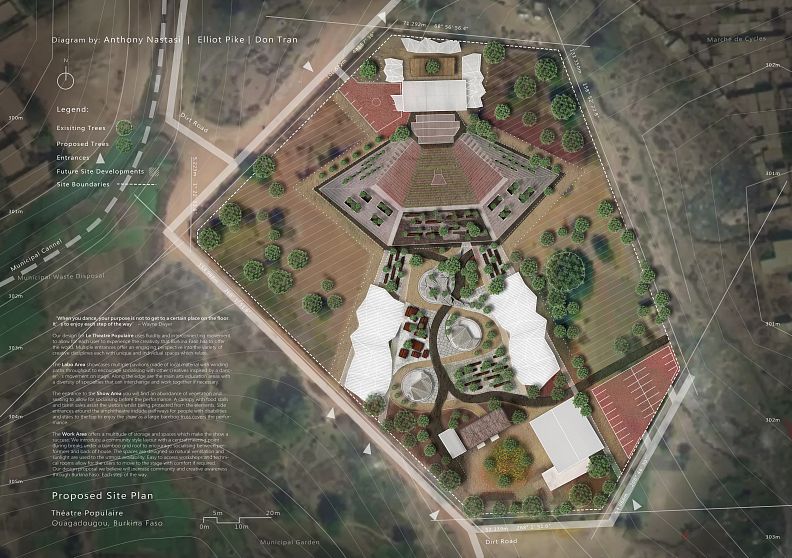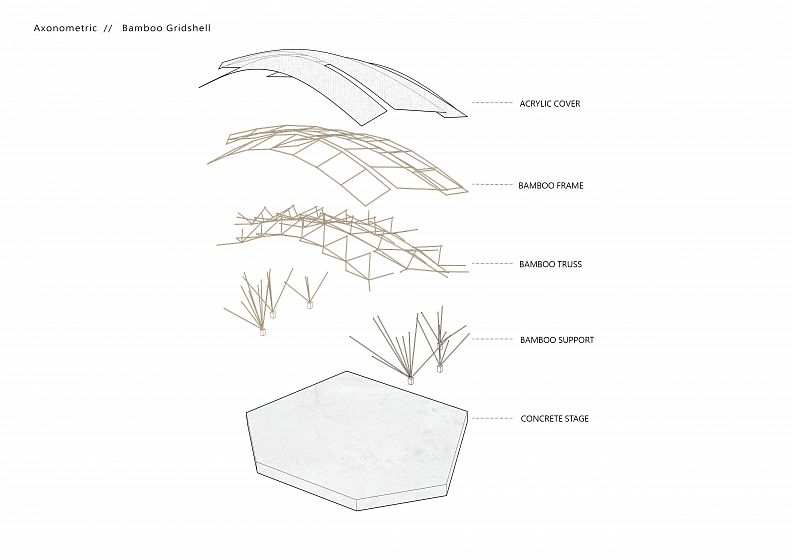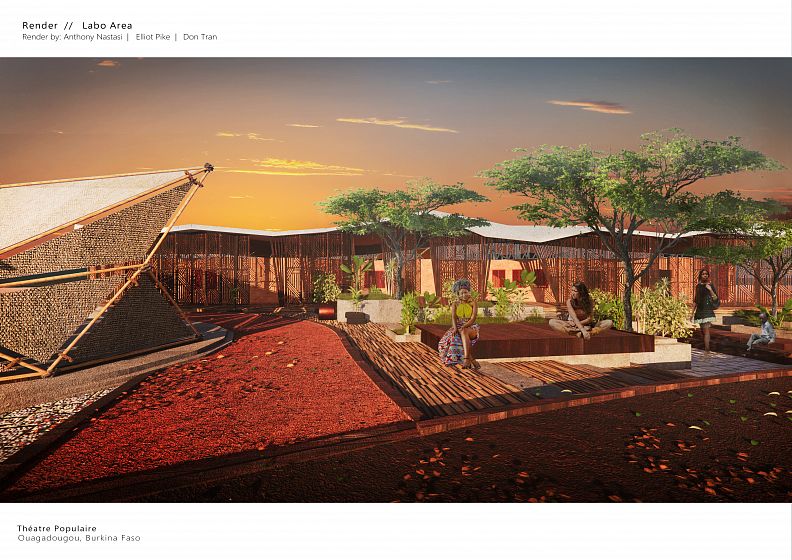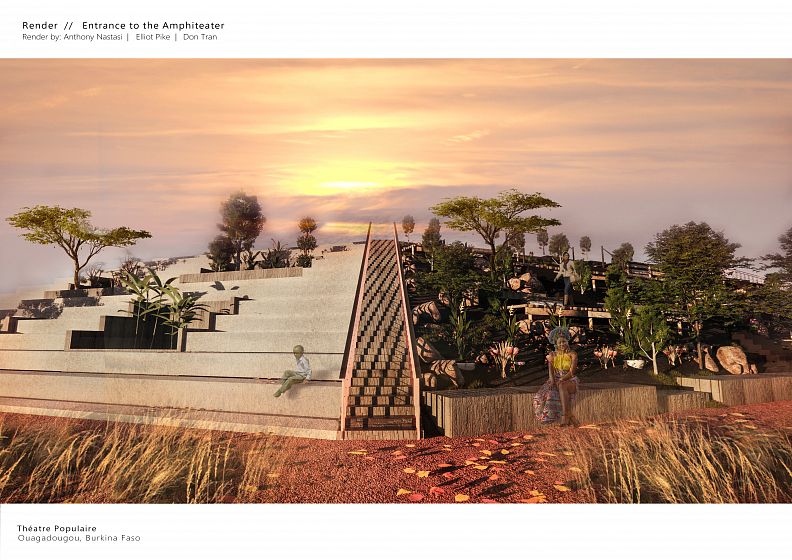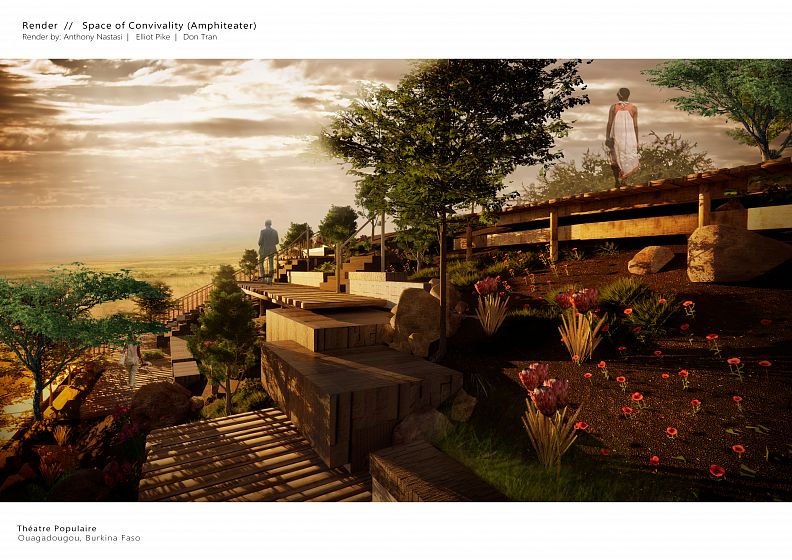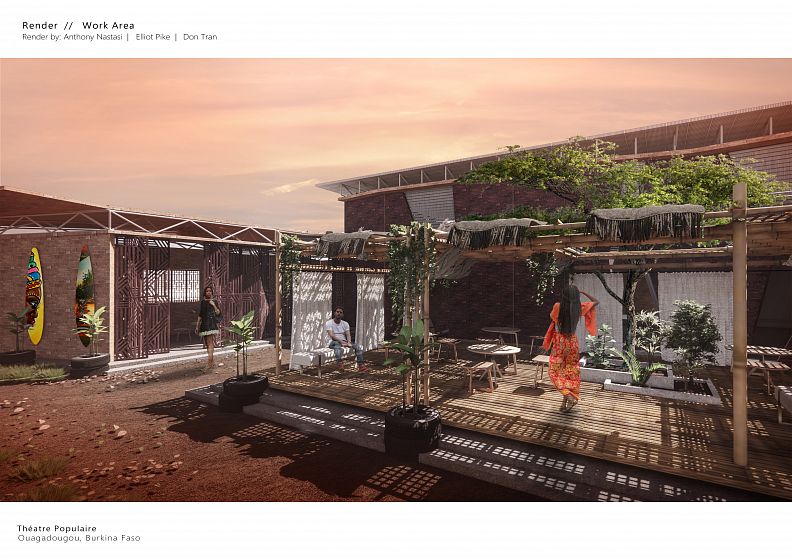Le Theater Populaire and Arts Precinct

Project idea
Our design proposal for Le Theater Populaire in Burkina Faso is inspired by the people, the culture and the creativity that the performers have to offer not only the local municipal but also the world. Utilising this inspiration, we collated all our ideas from traditional building techniques, cultural significance, and environmental awareness to apply to the design. This includes pattern symbolic reference found in traditional architecture and community interaction to allow for multi-disciplinary arts to converse and encourage creativity. A variety of disciplines are available at the Le Theater Populaire which engaged us to ensure that all user can circulate through each art into the next. We want to offer a space for participation and opportunity which we believe would benefit Ouagadougou by showcasing local talent and in turn creating an identity for the area.
Project description
“When you dance, your purpose is not to get to a certain place on the floor. It’s to enjoy each step of the way” – Wayne Dyer
Our design for Le Theater Populaire uses fluidity and interconnecting movement to allow for each user to experience the creativity that Burkina Faso has. Multiple entrances offer an engaging perspective into the variety of creative disciplines each with unique and individual spaces which relate. The Labo Area showcases multiple pavilions made of local material with winding paths throughout to encourage socialising with other creatives inspired by a dancer’s movement on stage. Along the edge are the main arts education areas with a diversity of specialities that can interchange and work together if necessary.
The entrance to the Show Area you will find an abundance of vegetation and seating to allow for socialising before the performance. A canopy with food stalls and ticket sales assist the visitors whilst being protected from the elements. Side entrances around the amphitheatre include pathways for people with disabilities and stairs to the top to enjoy the show as a large bamboo truss covers the performance.
The Work Area offers a multitude of storage and spaces which make the show a success. We introduce a community style layout with a central meeting point during breaks under a bamboo grid roof to encourage socialising between performers and back of house. The spaces are designed so natural ventilation and sunlight are used to the utmost availability as well as rain catchment systems to allow for the reuse of water. Easy to access workshops and technical rooms allow for the users to move to the stage with comfort if required.
We believe our design proposal will increase community and creative awareness through Burkina Faso. Each step of the way.
Technical information
Each chosen material represents the intended design brief whilst maintaining cost effectiveness. These are prevalent in such building materials as:
Bamboo Trusses
The strength of bamboo allows support for the corrugated metal roof. Raised above the walls it allows for heat to rise and disperse whilst allowing for cooler temperatures indoors.
Pressed Clay Brick
Using traditional methods of earth building. Clay bricks can be acquired easily and pressed to create blocks. This will act as a natural thermal whilst still supporting the roof.
Bamboo Pattern Screens
Inspired by the traditional pattern wall paintings in Burkina Faso we used layered bamboo screens to create an enclosed path. This technique also creates ventilation while still maintaining a similar triangulated shape.
Cotton Fabric:
From research, Burkina Faso is a large producer of handmade fabrics and textiles which are commonly used for fashion and cultural symbolism. We applied fabric within the central pavilion spaces to create a cost effective and shading option. This is tightly connected to the bamboo frame for security.
Sustainability:
Underground water tanks:
Beneath our central pavilions are water tanks which use drainage through a filtering system to allow for retaining and re-use. A hand pump or tap can be introduced to allow for clean water to be pumped to the user above.
Natural Ventilation:
All roofs are raised above the walls and breeze blocks are installed which allows for natural ventilation and thermal cooling. As hot air rises it will escape through the openings as cooler winds and air are retained on the used spaces. This technique is a traditional building method to the area which is useful to the climate and cost effective at the same time.
Documentation
Show PDF 1Show PDF 2Show PDF 3Show PDF 4Show PDF 5Show PDF 6Show PDF 7Show PDF 8Show PDF 9Show PDF 10


